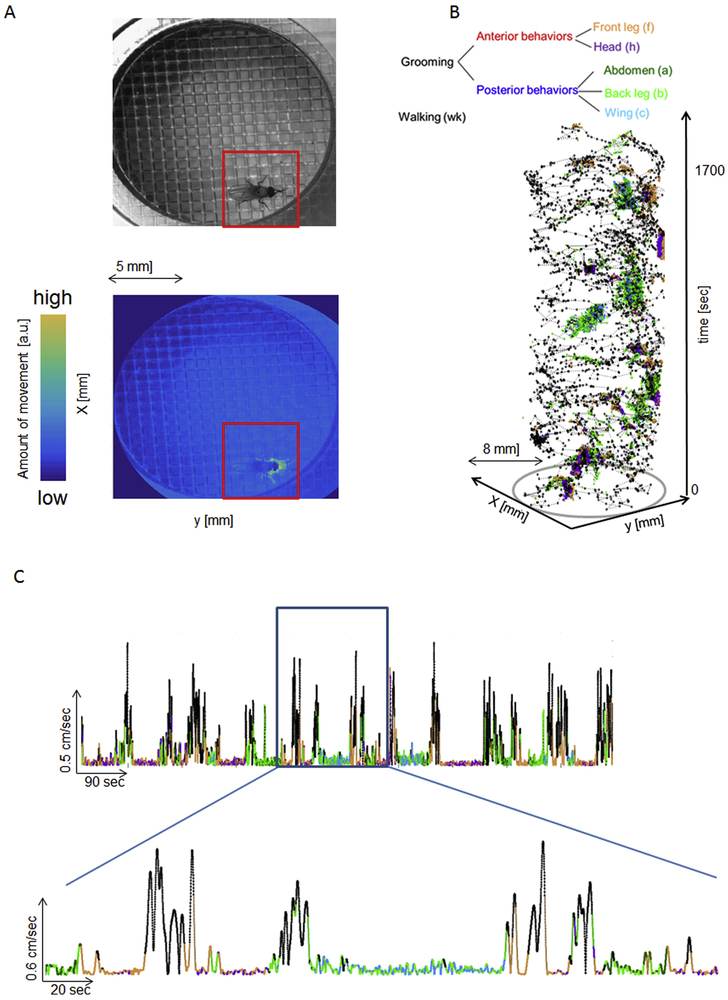Figure 2. Fly detection and tracking.
A: The animal’s position in the arena is determined by identifying pixels that show activity, as reflected in the change in light intensity in a 17-frame (500ms) time window. The red box shows the region of interest around the fly selected for subsequent processing steps. B: The plot of position over time shows that the fly can be reliably tracked throughout the entire recording session (1700 sec/28 min). Color-coding the positions in time using human annotations of grooming movements suggests that a fly remains stationary for several seconds while performing each movement. C: Animal’s body velocity over 28 minutes of the movie. The framed area is enlarged below. Color-coding is done by same human annotation as in B.

